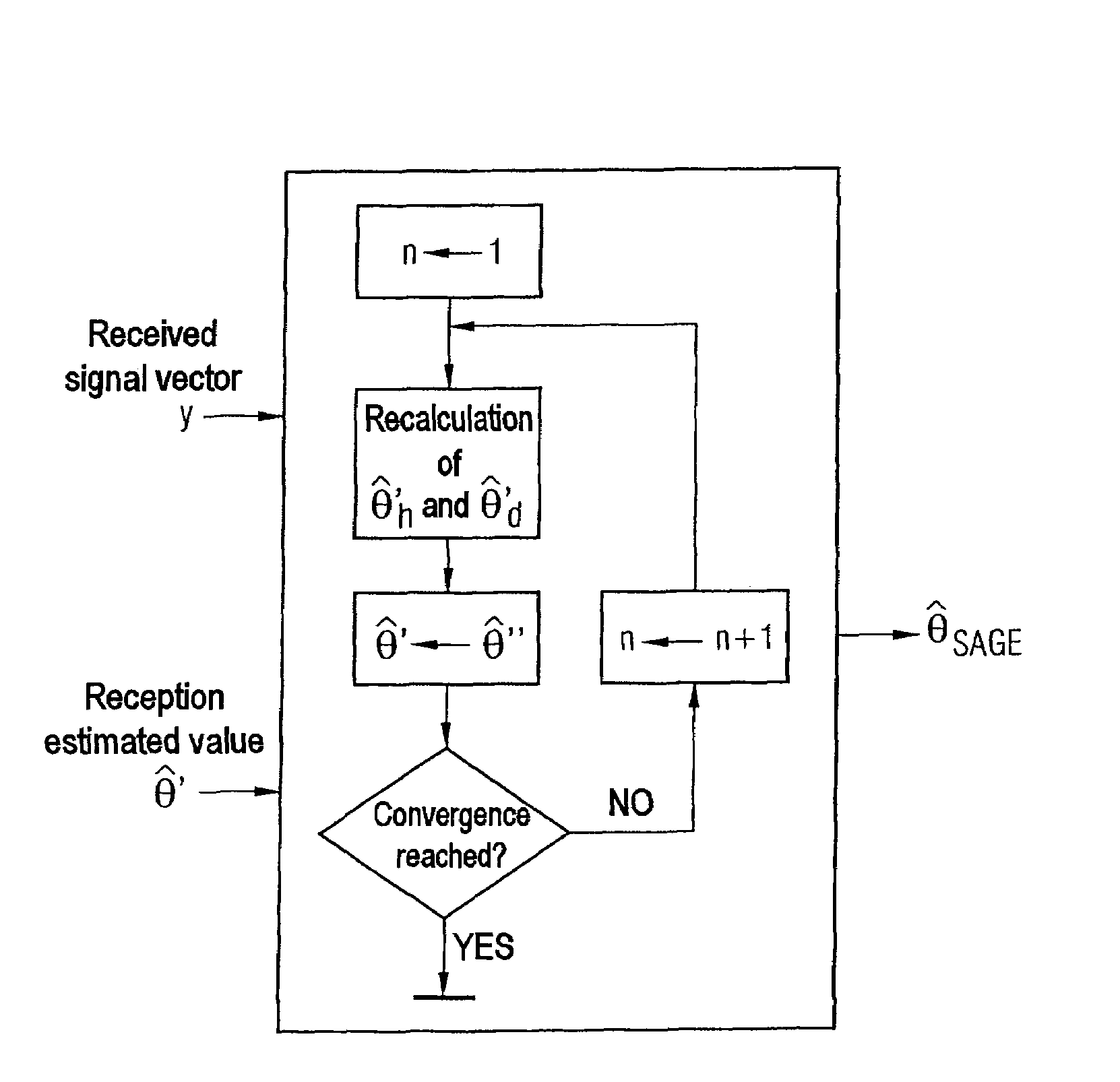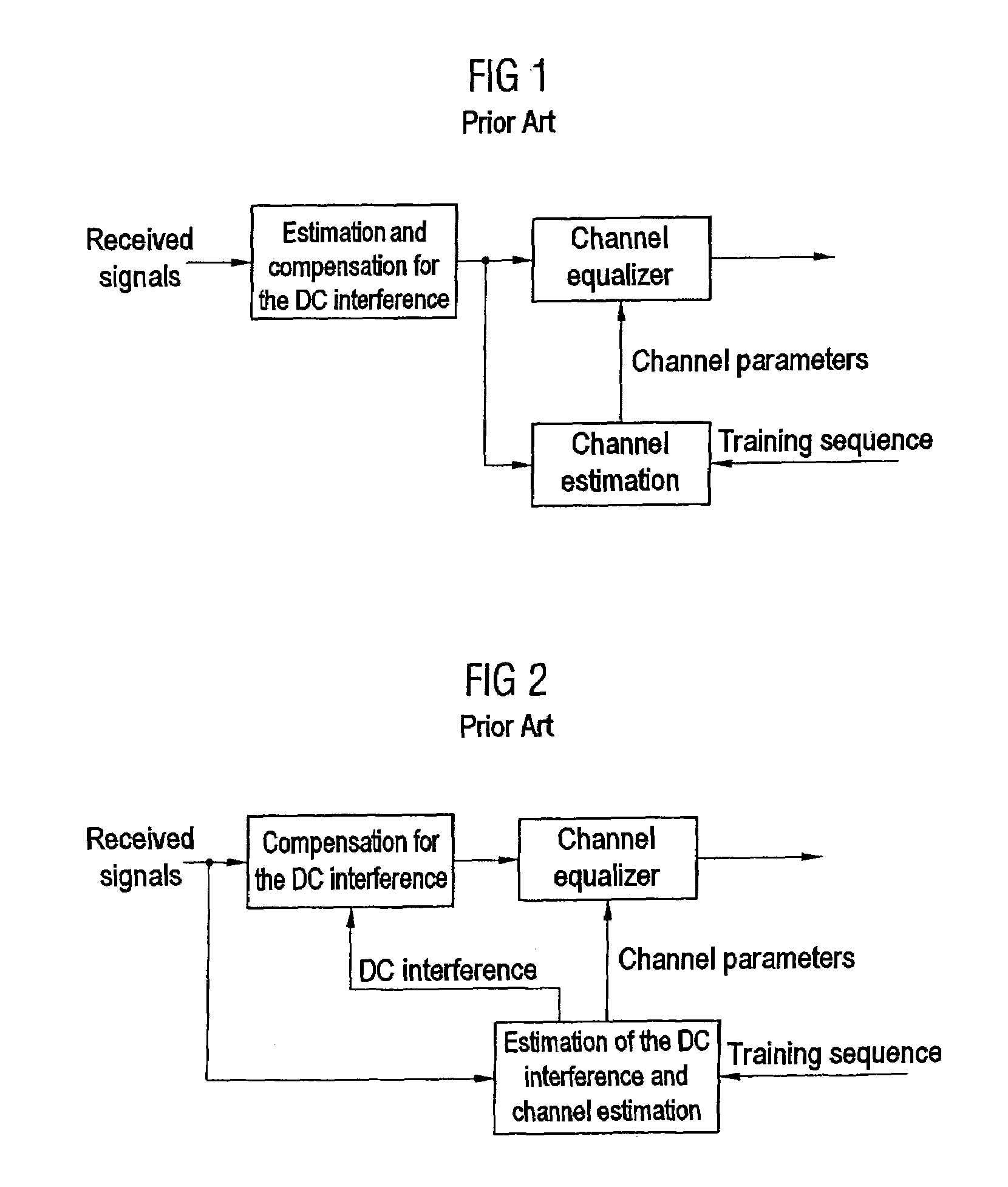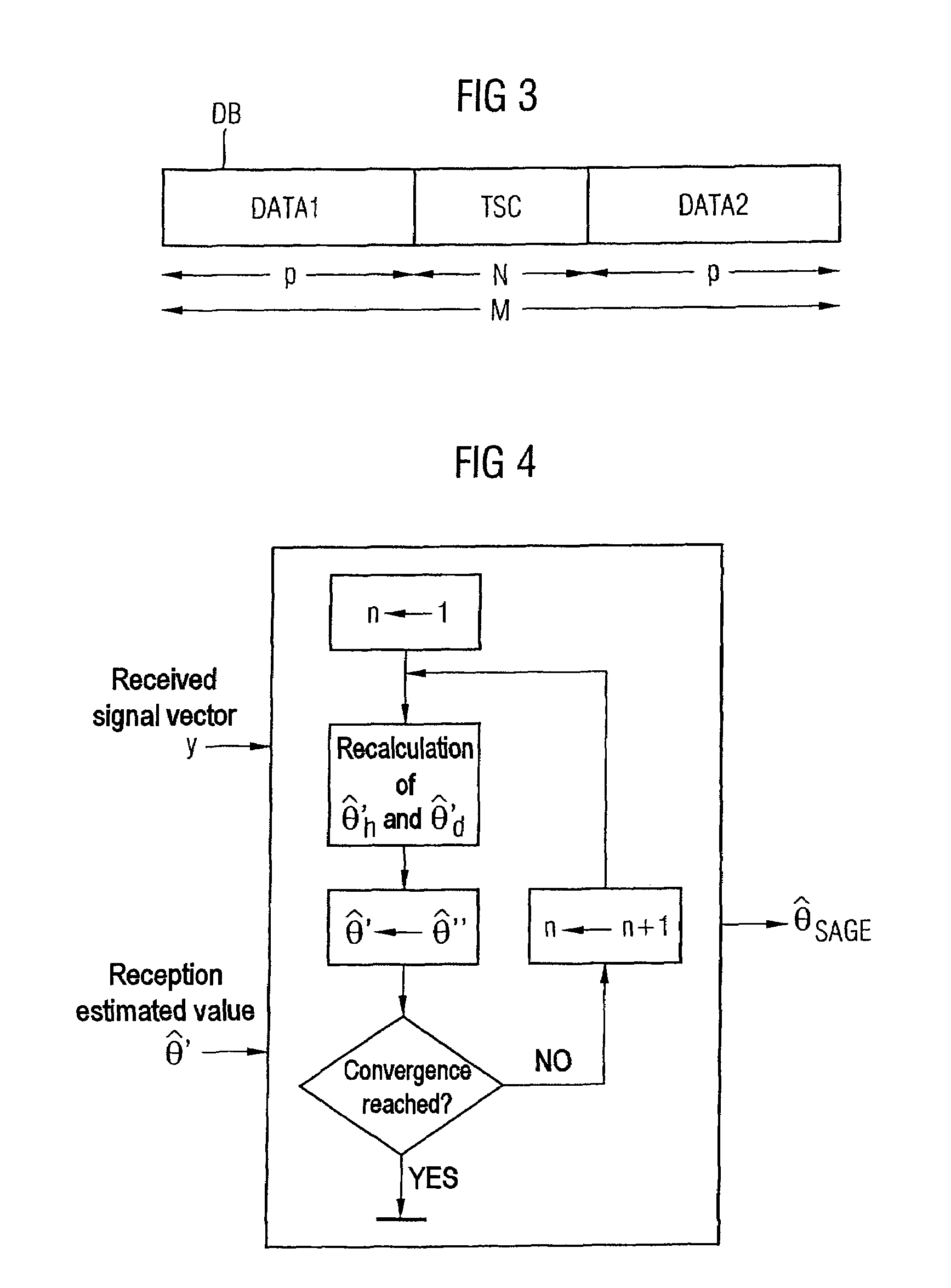Maximum likelihood estimation of the channel coefficients and of the DC offset in a digital baseband signal of a radio receiver using the SAGE algorithm
a radio receiver and probability estimation technology, applied in the direction of dc level restoring means or bias distort correction, amplitude demodulation, baseband system details, etc., can solve the problem of no longer being able to determine the correct data, dc components in the received signal, and intersymbol interferen
- Summary
- Abstract
- Description
- Claims
- Application Information
AI Technical Summary
Benefits of technology
Problems solved by technology
Method used
Image
Examples
Embodiment Construction
[0022]FIG. 3 shows a data burst DB which contains M data symbols. The data burst DB is transmitted from a radio transmitter and is received by a radio receiver. p data symbols DATA1 are transmitted at the start of the data burst DB. N data symbols of a training sequence TSC are then transmitted following which, provided that the training sequence TSC is located precisely in the center of the data burst DB, p data symbols DATA2 are transmitted, such that M=2p+N. The data symbols DATA1 and DATA2 contain the payload data to be transmitted.
[0023]The data symbols in the data burst DB are subject to DC interference and distortion, which is caused by intersymbol interference, after reception in the radio receiver. The training sequence TSC is used to equalize the payload data, which has been transmitted by means of the data symbols DATA1 and DATA2. The training sequence TSC contains a pseudo-random data sequence which has been agreed in advance and is known both to the radio transmitter an...
PUM
 Login to View More
Login to View More Abstract
Description
Claims
Application Information
 Login to View More
Login to View More - R&D
- Intellectual Property
- Life Sciences
- Materials
- Tech Scout
- Unparalleled Data Quality
- Higher Quality Content
- 60% Fewer Hallucinations
Browse by: Latest US Patents, China's latest patents, Technical Efficacy Thesaurus, Application Domain, Technology Topic, Popular Technical Reports.
© 2025 PatSnap. All rights reserved.Legal|Privacy policy|Modern Slavery Act Transparency Statement|Sitemap|About US| Contact US: help@patsnap.com



